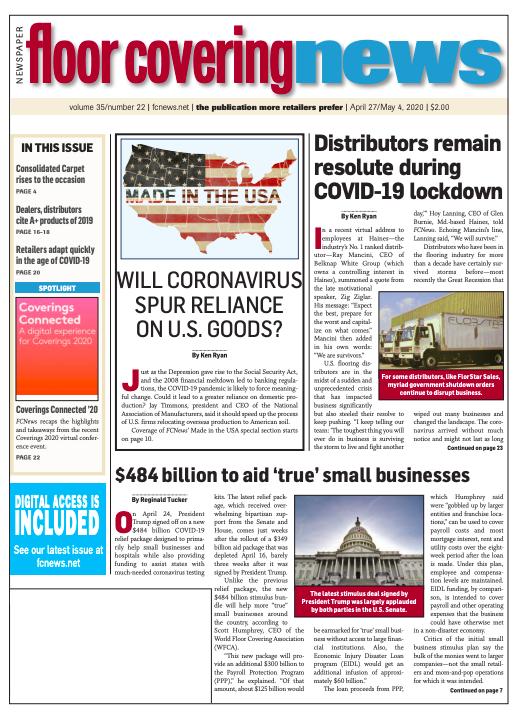
Marketing to millennials is nothing new, and Gen Z is even getting its turn in the sun—and not without merit. Research shows younger generations are poised to take control of billions of dollars in spending power in the very near future (if they haven’t done so already). However, the impact the COVID-19 pandemic will have on the spending habits of these groups is yet to be seen. Experts suggest it might not have a significant bearing on their perception of “Made in America.”
Today, millennials and Gen Z form the largest population cohort and control or influence hundreds of billions of dollars in household spending. While older millennials are key targets for the flooring industry, as they age into homeownership and renovation, Gen Z also holds major influence. Gen Z alone spends $44 billion a year and influences an additional $600 billion in household spending, according to research firm Mintel.
So, how important is the “Made in America” label to these two generations? Moreover, does the movement influence their purchasing decisions? According to The AIMsights Group, an international marketing consulting firm, price remains the key factor in the purchasing decision for these consumers. And, the Made in America label may just be too broad.
“The geographic expanse of ‘Made in America’ is generally too big,” said Marsha Everton, principal, AIMsights. “Consumers like that L.L. Bean and Burt’s Bees are direct from Maine—as well as being committed to the greater good and socially responsible along many dimensions. They like that Crossville tiles are sustainably manufactured in Tennessee while offering innovative designs.”
To that end, Everton added, “Locally Made,” with a very specific source identified, has become more important than the “Made in America” slogan. “In addition to trusting our neighbors to a make a safe, good quality product, there is the opportunity to support the local economy—and it gives us a story to tell,” she explained. “‘Locally Made’ delivers an experience with the product.”
When marketing product in or beyond the local market, it’s important to be specific about where the product was made and to tell stories about the brand, company and people—and how the greater good is served. “The millennials are especially interested in these health, wellness, sustainability and social good factors,” Everton added. “They strongly believe that they will individually have to be the change agents that deliver a greater good—that government cannot, or will not, provide the leadership.”
When it comes specifically to that Made in America label, what the group has found is that it may mean consumers can trust the quality and safety of the product—with safety being the most important factor, Everton explained. “With their interest in health and wellness, these consumers want to know that they and their families (including their pets) will be safe as they use the products. They want to know exactly who made the product, with what materials or ingredients, with what labor practices, with what impact on the environment and with what contribution to the greater good. So, it’s not about ‘Made in America,’ it’s about ‘How it is Made in America.’”
But what about after the economy rebounds and these two groups are able to put their significant spending power to use once again? According to Everton, the same mindset applies. “For now, we are not seeing any change with the relationship of millennials and Gen Z with Made in America,” she said. “So many people compare this to the 9/11 experience. We observe that the COVID-19 experience is very, very different.”
Everton explained that 9/11 created a feeling of “American under attack,” which united the nation and increased the perception that Made in America was the patriotic path to purchase decisions. Even in that context, she said the company found people made purchase decisions on price, quality and convenience, and post purchase were pleased if the product was Made in America.
“The current feeling is more of a ‘human race under attack’ scenario, and the perception of how to deal with this attack in the United States is highly polarized,” she explained. “This experience has not united our divided nation. The role of price, quality and convenience are even more critical as the table stakes for getting into the sphere of consideration for a purchase.”
Ironically, according to Everton, it’s the B2B sector and not B2C that will move toward Made in America. “As they review the COVID-related disruption to their supply chains, they will increase consideration of the shorter distance to components that can be shipped quickly by train or truck rather than requiring weeks on the ocean.”

